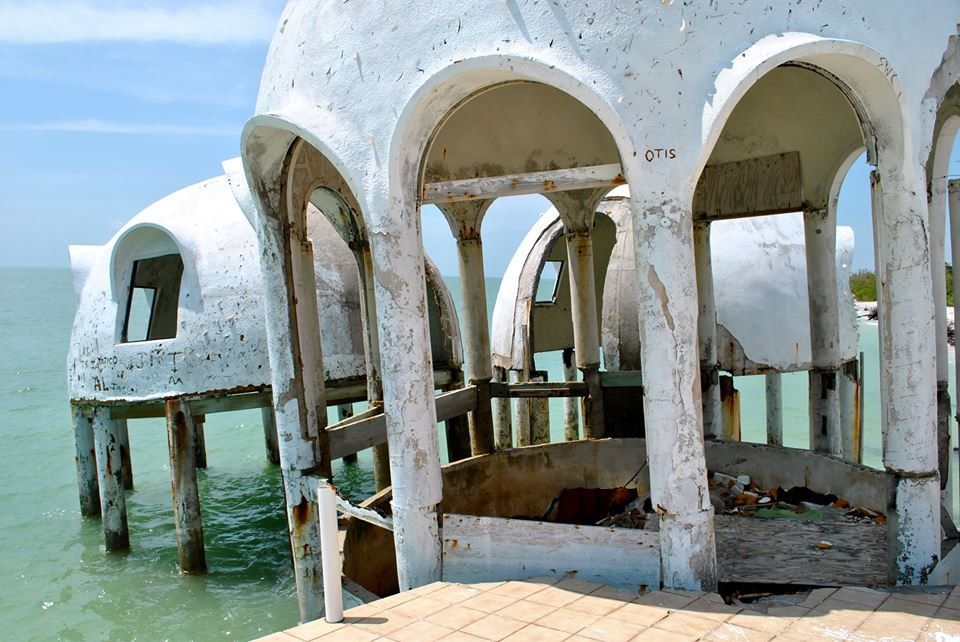The Cape Romano Dome House, a distinctive structure consisting of six dome-shaped modules perched on stilts, was a visionary project conceived by retired oil producer Bob Lee in 1982. Situated on an islet near Cape Romano Island in Florida‘s Ten Thousand Islands, this unique home showcased Lee’s innovative approach to design and sustainability.
.jpg/:/cr=t:0%25,l:0%25,w:100%25,h:100%25/rs=w:1280)
Lee’s inspiration for the dome house arose after acquiring land on Morgan Island, where he envisioned a vacation retreat like no other. The design featured interconnected domes with multiple levels, creating spacious and airy living spaces. Jane Maples, Lee’s granddaughter, fondly remembers his adventurous spirit and passion for invention, which influenced every aspect of the house’s layout and functionality.
What set the dome house apart was its self-sufficiency. Rainwater was collected and purified for various household needs, while solar panels provided renewable energy, making the home environmentally friendly. Completed in 1982, it initially served as a cherished vacation getaway for the Lee family before becoming their permanent residence.

Despite its robust construction, the dome house encountered challenges, notably during Hurricane Andrew in 1992, which caused significant interior damage. Although the main structure remained intact, the family ultimately had to vacate the home. Today, the remnants of the Cape Romano Dome House stand as a tribute to Bob Lee’s vision and the delicate balance between human ingenuity and the forces of nature.

Over time, the Cape Romano Dome House encountered a series of obstacles, from encroaching water levels to coastal erosion. In 2005, the property changed hands as Bob Lee sold it to John Tosto, who had ambitious plans for its restoration. Despite recommendations to build a seawall for protection, Tosto opted to relocate the house to higher ground, aiming to preserve its unique structure.

However, Hurricane Wilma’s wrath in 2005 worsened the situation, weakening the house’s foundation and thwarting Tosto’s relocation efforts. Regulatory red tape and permit woes further impeded progress, culminating in a demolition order from the Collier County Code Enforcement Board in 2007 due to safety concerns. Despite Tosto’s attempts to contest the order, including presenting evidence of the house’s potential repairability, the demolition mandate remained firm.

By 2009, Tosto had poured significant resources into the project, but the domes’ pillars were now submerged, rendering the house uninhabitable. Left unattended, the structure became a forgotten relic, occasionally visited by curious locals and fishermen. In 2013, a remarkable discovery revealed that the ruins had transformed into a thriving reef, bustling with marine activity.

Although initiatives to repurpose the domes as an underwater attraction faltered due to funding challenges, the domes endured until 2017, when Hurricane Irma dealt a further blow. Ownership of the remnants transferred to the state in 2018. Finally, in September 2022, Hurricane Ian delivered the fatal blow, reducing the once-iconic domes to mere remnants, with only scattered pilings left above the waterline.

Also Recommended: The 10 Most Beautiful Abandoned Places in the World

